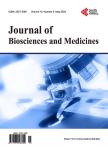Evaluation of Physical and Mental Quality of Life of Motorcycle Taxi Drivers
Evaluation of Physical and Mental Quality of Life of Motorcycle Taxi Drivers作者机构:Departamento do Programa de Pós-Graduaç ã o em Saúde e Desenvolvimento na Regiã o Centro Oeste Campo Grande Mato Grosso do Sul Brasil
出 版 物:《Journal of Biosciences and Medicines》 (生物科学与医学(英文))
年 卷 期:2016年第4卷第3期
页 面:69-74页
学科分类:02[经济学] 0202[经济学-应用经济学] 020206[经济学-国际贸易学]
主 题:Disease Motorcycle Taxi Drivers Quality of Life
摘 要:Motorcycle taxi drivers are workers who use motorcycle to carry passengers. Objectives: to identify the sociodemographic profile and evaluate the physical and mental quality of life of motorcycle taxi drivers. Methods: Cross-sectional study, held in Campo Grande, Mato Grosso do Sul-Brazil, from May to July 2015 with 301 participants. To calculate the sample size, the margin of error was 5%, confidence level, 95%;and the drivers were randomly selected. For data collection, two instruments were used: the demographic questionnaire and the SF-36 Health Status Questionnaire. Results: Among the 301 respondents, predominance fell on males (98.7%, n = 297), married or in a stable relationship (63.5%, n = 191), with completed high school education (44.9%, n = 135). More than half felt discomfort while working (52.8%, n = 159). Of those with diagnosed disease the predominant type of disease was hypertension (55.5%, n = 30). When male and female were compared, men had lower average in the mental health aspect (63.39 ± 13.22);and women, in the emotional aspect (41.66 ± 31.91). There were significant differences in the scores of physical functioning (p = 0.002), bodily pain (0.043) and general health perceptions (p = 0.003) of the drivers reporting disease, compared to those who did not reported it. Conclusion: The studied motorcycle taxi drivers are mostly male, married, with high school education. Regarding quality of life, men had lower perception in the general mental health aspect whereas women showed lower perception in the emotional aspects. The individuals with disease had lower perceived quality of life in the physical functioning, bodily pain and general health concepts.



